DIY
Quick Fix: How to Patch a Drywall Hole
Quick Fix: How to Patch a Drywall Hole
Dents and dings disappear, leaving your walls looking brand new, with this fix that even a novice can do
Follow
Meg is a budget-minded DIY lifestyle blogger at Revamp Homegoods (http://www.revamphomegoods.com)…. More »
Homes, even beautifully designed ones, receive their fair share of abuse over the years. Unsightly holes from repair projects gone wrong, rough and tumble children or those pesky doorknobs can detract from the lovely home you’ve created. While seemingly daunting, most small- to medium-size holes take little time to repair, and the fix can be done by the most novice handyman (or woman) — getting your home back to being the envy of the block.
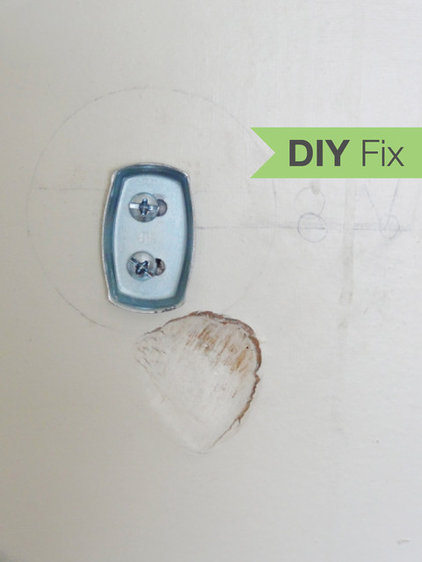
by Meg Padgett
BEFORE: This 2-inch divot from a wayward hammer stroke was in a visible location just beneath the mounting hardware of ourMoen Glenshire Pivoting Mirrorand in desperate need of being patched. Here’s how you can repair holes in your drywall, just like we did.
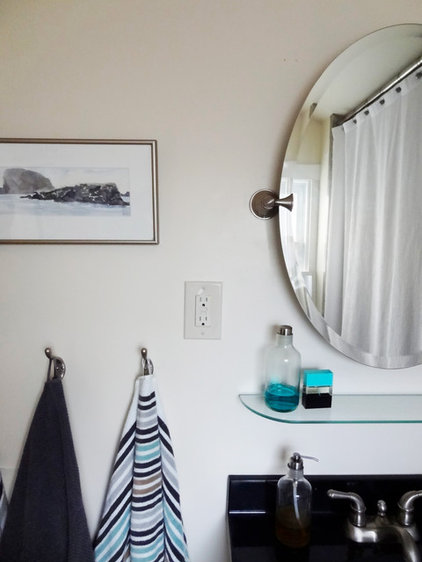
by Meg Padgett
AFTER:You’d never know there was a hole next to the mirror’s hardware.Materials:• Self-adhesive wall patch
• Spackle or nonshrink drywall joint compound
• Wide putty knife
• Sanding block
• Metal shears
• Spackle or nonshrink drywall joint compound
• Wide putty knife
• Sanding block
• Metal shears
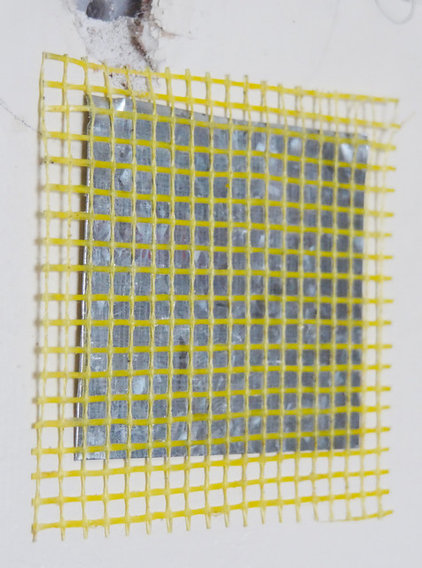
by Meg Padgett
Smooth the surface, removing any chunks of drywall. Then clean and dry the area.Remove the self-adhesive wall patchfrom the package, measure the hole and cut the patch to size or to the shape of the hole. Cut the mesh and the thin galvanized steel plate separately. The steel plate should be slightly larger than the hole, and the mesh should be slightly larger than the steel plate.Place the patch over the hole and smooth the mesh onto the surface of the wall. Worried that the patch will create a bulge in the wall? The thin patch is unnoticeable after proper feathering of the spackle or joint compound. Feathering refers to the act of tapering the repair from the high center to the wall around it with a wide putty knife.Note: Larger holes often need to be patched with drywall, which may require additional support behind it, such as a 2-by-4. The drywall should be cut to fit snugly in the hole. Tape and mud the seam to finish. For smaller holes you can skip the patch and just fill the hole with spackle.
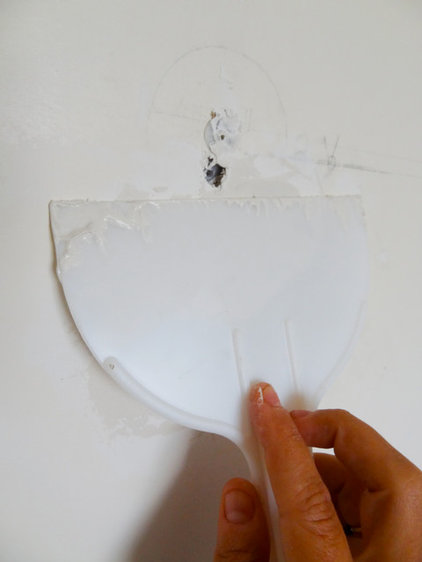
by Meg Padgett
Apply a thin, even coat of joint compound or spackle to the patched hole by holding the wide putty knife at about a 30-degree angle and pulling it toward you. Feather the spackle or joint compound out from the center to the outside.Let the spackle or joint compound dry fully before proceeding.
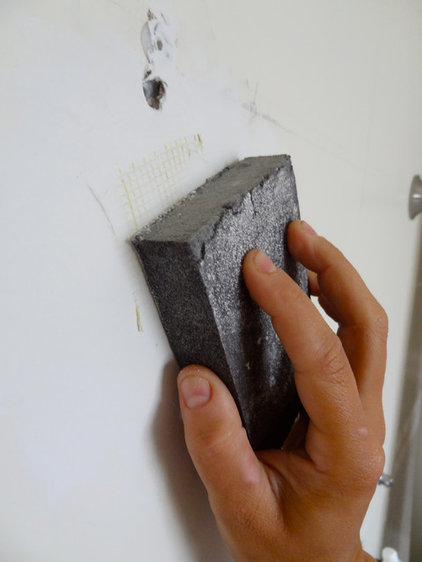
by Meg Padgett
Once the area is dry, sand it until everything is smooth and apply another coat or spackle or joint compound. Repeat until the patched area is completely covered and no longer detectable.
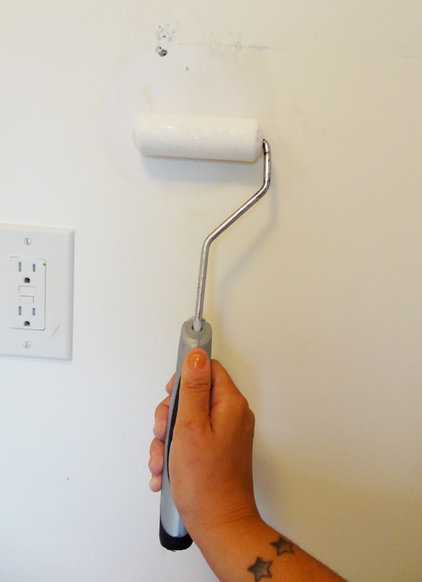
by Meg Padgett
After the final coat of joint compound or spackle has dried, sand the surface and wipe it clean. If needed, apply texture to the wall for a seamless finish. Homax Spray Texturedries quickly and makes the process practically error proof with customizations for the size and coverage.Finally, prime and paint the surface.Note: Depending on your sheen of paint, you may need to paint the entire wall rather than just the newly patched area. Low-sheen paint typically touches up better than higher-sheen paint, whereas fresh coats of glossy paint tend to be shinier than the original, making the fix more noticeable.
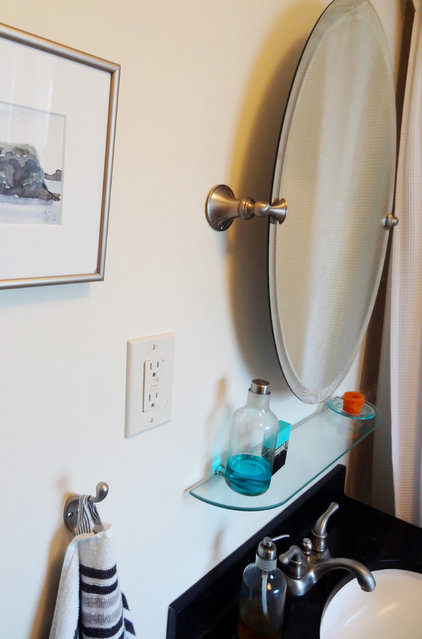
by Meg Padgett
With our hole patched, our bathroom is back to being Street of Dreams quality — or at the very least worthy of a visit from the in-laws.More quick home fixes


